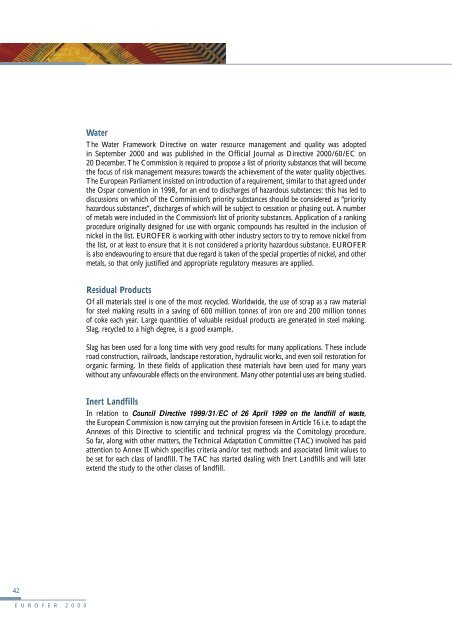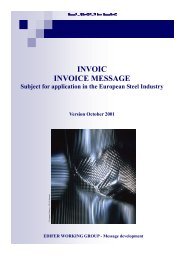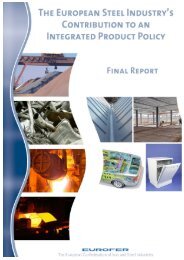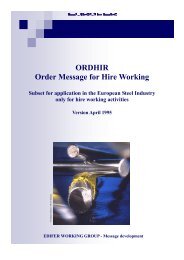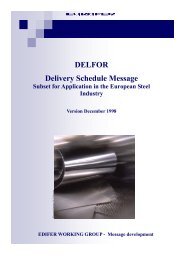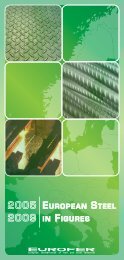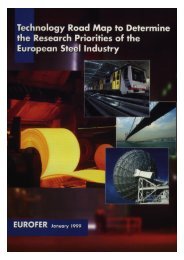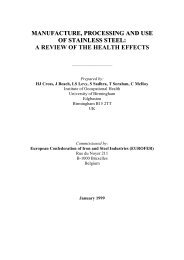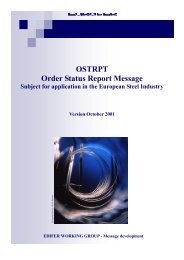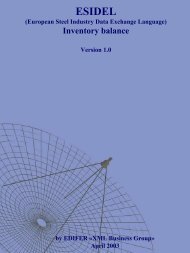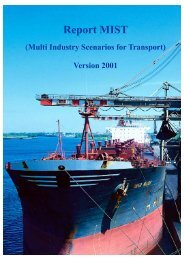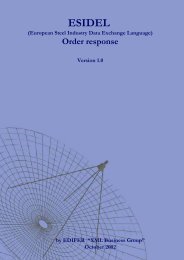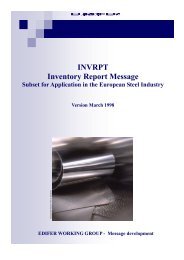Imports - Eurofer
Imports - Eurofer
Imports - Eurofer
Create successful ePaper yourself
Turn your PDF publications into a flip-book with our unique Google optimized e-Paper software.
42<br />
E U R O F E R 2 0 0 0<br />
Water<br />
The Water Framework Directive on water resource management and quality was adopted<br />
in September 2000 and was published in the Official Journal as Directive 2000/60/EC on<br />
20 December. The Commission is required to propose a list of priority substances that will become<br />
the focus of risk management measures towards the achievement of the water quality objectives.<br />
The European Parliament insisted on introduction of a requirement, similar to that agreed under<br />
the Ospar convention in 1998, for an end to discharges of hazardous substances: this has led to<br />
discussions on which of the Commission’s priority substances should be considered as “priority<br />
hazardous substances”, discharges of which will be subject to cessation or phasing out. A number<br />
of metals were included in the Commission’s list of priority substances. Application of a ranking<br />
procedure originally designed for use with organic compounds has resulted in the inclusion of<br />
nickel in the list. EUROFER is working with other industry sectors to try to remove nickel from<br />
the list, or at least to ensure that it is not considered a priority hazardous substance. EUROFER<br />
is also endeavouring to ensure that due regard is taken of the special properties of nickel, and other<br />
metals, so that only justified and appropriate regulatory measures are applied.<br />
Residual Products<br />
Of all materials steel is one of the most recycled. Worldwide, the use of scrap as a raw material<br />
for steel making results in a saving of 600 million tonnes of iron ore and 200 million tonnes<br />
of coke each year. Large quantities of valuable residual products are generated in steel making.<br />
Slag, recycled to a high degree, is a good example.<br />
Slag has been used for a long time with very good results for many applications. These include<br />
road construction, railroads, landscape restoration, hydraulic works, and even soil restoration for<br />
organic farming. In these fields of application these materials have been used for many years<br />
without any unfavourable effects on the environment. Many other potential uses are being studied.<br />
Inert Landfills<br />
In relation to Council Directive 1999/31/EC of 26 April 1999 on the landfill of waste,<br />
the European Commission is now carrying out the provision foreseen in Article 16 i.e. to adapt the<br />
Annexes of this Directive to scientific and technical progress via the Comitology procedure.<br />
So far, along with other matters, the Technical Adaptation Committee (TAC) involved has paid<br />
attention to Annex II which specifies criteria and/or test methods and associated limit values to<br />
be set for each class of landfill. The TAC has started dealing with Inert Landfills and will later<br />
extend the study to the other classes of landfill.


